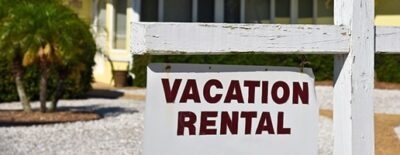Hawaii Vacation Rentals: Better, But Not There Yet
Hawaii vacation rentals statewide reported substantial increases in supply, demand, occupancy and average daily rate (ADR) in June 2021 compared to June 2020. However, in comparison to June 2019, vacation rental supply, demand and ADR were down while occupancy rose slightly due to a reduction in supply levels.
Similarly, through the first half of 2021, Hawaii vacation rentals reported overall increases in the same performance categories compared to 2020, but lagged behind the pre-pandemic totals reported for the first half of 2019.
The Hawaii Tourism Authority (HTA) issued today the Hawaii Vacation Rental Performance Report for the month of June and first half of 2021 utilizing data compiled by Transparent Intelligence, Inc.
In June 2021, the total monthly supply of statewide vacation rentals was 591,100 unit nights (+74.1% vs. 2020, -32.9% vs. 2019) and monthly demand was 472,100 unit nights (+910.6% vs. 2020, -27.1% vs. 2019). That resulted in an average monthly unit occupancy of 79.9 percent (+66.1 percentage points vs. 2020, +6.3 percentage points vs. 2019) for June, which was slightly higher than the occupancy of Hawaii’s hotels (77.0 percent).
The ADR for vacation rental units statewide increased in June to $242 year-over-year (+17.0% vs. 2020, -29.9% vs. 2019), but was still significantly less than the ADR of $346 in June 2019. By comparison the ADR for hotels was $320 in June 2021. It is important to note that unlike hotels, units in vacation rentals, timeshare resorts and condominium hotels are not necessarily available year-round or each day of the month and often accommodate a larger number of guests than traditional hotel rooms.
In June, legal short-term rentals were allowed to operate in Maui County and on Oahu, Hawaii Island and Kauai as long as they were not being used as a quarantine location.
Hawaii’s quarantine order for travelers due to the pandemic began on March 26, 2020, which immediately resulted in dramatic impacts to the State’s tourism industry. During June 2021, most passengers arriving from out-of-state and traveling inter-county could bypass the State’s mandatory 10-day self-quarantine with a valid negative COVID-19 NAAT test result from a Trusted Testing Partner prior to their departure to Hawaii through the Safe Travels program. In addition, individuals who were fully vaccinated in Hawaii could bypass the quarantine order beginning June 15, 2021. Inter-county travel restrictions were lifted also as of June 15, 2021.
The data in HTA’s Hawaii Vacation Rental Performance Report specifically excludes units reported in its Hawaii Hotel Performance Report and its Hawaii Timeshare Quarterly Survey Report. A vacation rental is defined as the use of a rental house, condominium unit, private room in private home, or shared room/space in private home. This report does not determine or differentiate between units that are permitted or unpermitted. The legality of any given vacation rental unit is determined on a county basis
First Half 2021
Throughout the first half of 2021, the performance of Hawaii vacation rental properties was impacted by restrictions related to the COVID-19 pandemic. The supply of statewide vacation rentals for the first six months was 3.5 million unit nights (+4.2% vs. 2020, -26.1% vs. 2019) and demand was 2.2 million unit nights (+12.1% vs. 2020, -40.1% vs. 2019), resulting in an average unit occupancy of 61.2 percent (+7.6 percentage points vs. 2020, -19.0 percentage points vs. 2019). During this same period, Hawaii hotels reported ADR at $293 and occupancy of 48.1 percent.
Island Highlights
In June, Maui County had the largest vacation rental supply of all four counties with 227,300 available unit nights (+112.6% vs. 2020, -16.0% vs. 2019). Unit demand was 184,900 unit nights (+1,417.0% vs. 2020, -12.1% vs. 2019), resulting in 81.3 percent occupancy (+69.9 percentage points vs. 2020, +3.6 percentage points vs. 2019) with ADR of $267 (+9.1% vs. 2020, -31.4% vs. 2019). In comparison, Maui County hotels reported ADR at $498 and occupancy of 79.2 percent.
For the first half of 2021, the vacation rental supply for Maui County was 1.4 million unit nights (+30.2% vs. 2020, +1.6% vs 2019), and demand was 910,200 unit nights (+38.6% vs. 2020, -19.3% vs. 2019). The average occupancy year-to-date through June was 63.9 percent (+6.5 percentage points vs. 2020, -20.6 percentage points vs. 2019), and ADR was $270 (-11.8% vs. 2020, -14.6% vs. 2019). In comparison, Maui County hotels reported ADR at $475 and occupancy of 52.0 percent.
Oahu vacation rental supply was 148,700 available unit nights (+34.4% vs. 2020, -50.2% vs. 2019) in June. Unit demand was 115,600 unit nights (+847.8% vs. 2020, -48.3% vs. 2019), resulting in 77.7 percent occupancy (+66.7 percentage points vs. 2020, +2.8 percentage points vs. 2019) and ADR of $200 (+28.8% vs. 2020, -31.4% vs. 2019). Oahu hotels reported ADR at $227 and occupancy of 75.4 percent.
For the first half of 2021, the vacation rental supply for Oahu was 822,400 unit nights (-20.9% vs. 2020, -50.3% vs 2019), and demand was 530,000 unit nights (+0.3% vs. 2020, -57.2% vs. 2019). The average occupancy for year-to-date through June was 64.4 percent (+26.8 percentage points vs. 2020, -13.8 percentage points vs. 2019), and ADR was $195 (+6.6% vs. 2020, -5.1% vs. 2019). In comparison, Oahu hotels reported ADR at $197 and occupancy of 46.3 percent.
The island of Hawaii vacation rental supply was 129,700 available unit nights (+56.0% vs. 2020, -35.4% vs. 2019) in June. Unit demand was 104,500 unit nights (+681.6% vs. 2020, -19.5% vs. 2019), resulting in 80.6 percent occupancy (+64.5 percentage points vs. 2020, +16.0 percentage points vs. 2019) with ADR of $200 (+20.7% vs. 2020, -30.8% vs. 2019). Hawaii Island hotels reported ADR at $356 and occupancy of 79.0 percent.
Year-to-date through June, vacation rental supply for the island of Hawaii was 749,600 unit nights (-5.9% vs. 2020, -33.0% vs. 2019), and demand was 493,700 unit nights (+6.5% vs. 2020, -35.5% vs. 2019). The average occupancy for the first half of the year was 65.9 percent (+13.2 percentage points vs. 2020, -3.7 percentage points vs. 2019), and ADR was $207 (+14.6% vs. 2020, +1.1% vs. 2019). In comparison, island of Hawaii hotels reported ADR at $319 and occupancy of 51.3 percent.
Kauai had the fewest number of available unit nights in June at 85,400 (+120.5% vs. 2020, -23.0% vs. 2019). Unit demand was 67,200 unit nights (+648.9% vs. 2020, -20.3% vs. 2019), resulting in 78.6 percent occupancy (+55.5 percentage points vs. 2020, +2.7 percentage points vs. 2019) with ADR of $313 (+8.6% vs. 2020, -33.4% vs. 2019). Kauai hotels reported ADR at $339 and occupancy of 78.4 percent.
Year-to-date through June, vacation rental supply for Kauai was 536,500 unit nights (+16.8% vs. 2020, -11.4% vs. 2019), and demand was 228,100 unit nights (-18.7% vs. 2020, -52.7% vs. 2019). The average occupancy for the first half of the year was 42.5 percent (-30.3 percentage points vs. 2020, -46.6 percentage points vs. 2019), and ADR was $303 (+0.5% vs. 2020, -10.6% vs. 2019). In comparison, Kauai hotels reported ADR at $269 and occupancy of 43.3 percent.




